Space

Dec 22nd, 2025 - It's quick and easy to access Live Science Plus, simply enter your email below. We'll send you a confirmation and sign you up for our daily newsletter, keeping you up to date with the latest science news. Facebook X Whatsapp Reddit Flipboard Join the conversation Add us as a preferred source on Google Newsletter Subscribe to our newsletter The final frontier is an unendingly beautiful expanse filled with unimaginable wonders, making it the perfect sandbox for photographers, astronomical ... [Read More]
Source: livescience.com

Dec 22nd, 2025 - Follow Earth on Google Astronomers have finally watched a hidden partner star move in an almost perfect circle around a bloated red giant about 530 light years away. The system, called pi1 Gruis, offers an unusually clear preview of how close companions can reshape dying stars like our Sun billions of years from now. Pi1 Gruis started with roughly the Sun's mass, yet it has ballooned to hundreds of times the Sun's size and now outshines it thousands of times over. By catching a nearby companion ... [Read More]
Source: earth.com
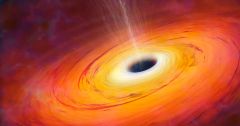
Dec 22nd, 2025 - Supermassive black holes are an anomaly that sits quietly at the centers of galaxies, holding gas and stars closer with their powerful gravity. But now scientists have discovered a mind-boggling phenomenon: a supermassive black hole skyrocketing through space. According to a new study , NASA's James Webb Space Telescope (JWST) captured the runway black hole that measures about 10 million times larger than the sun and moving at a speed of 2.2 million miles per hour. The supermassive black hole ... [Read More]
Source: greenmatters.com
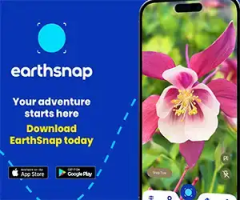
Dec 21st, 2025 - Follow Earth on Google Astronomers spotted an object that looks like a planet, weighs about as much as Jupiter, and yet behaves like nothing anyone has seen before. This strange world sits dangerously close to a dead star. Its air is filled with carbon instead of water vapor. Sooty clouds drift through its skies. Even its shape is warped, stretched by gravity into something closer to a lemon than a sphere. It is the kind of find that makes scientists stop, stare, and admit they don't have a ... [Read More]
Source: earth.com

Dec 21st, 2025 - When NASA's $10 billion James Webb Space Telescope (JWST) rode safely to space on an Ariane 5 booster from Europe's Spaceport in Kourou, French Guiana, the liftoff at 7:20 A.M. EST on Dec. 25, 2021, marked the end of a development full of delays and cost overruns — and the beginning of the telescope's month-long journey to its destination nearly 1 million miles (1.5 million kilometers) from Earth. JWST originated in a 1996 report put together by a panel of astronomers attempting to plan ... [Read More]
Source: astronomy.com
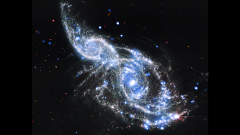
Dec 21st, 2025 - It's quick and easy to access Live Science Plus, simply enter your email below. We'll send you a confirmation and sign you up for our daily newsletter, keeping you up to date with the latest science news. Facebook X Whatsapp Reddit Flipboard Join the conversation Add us as a preferred source on Google Newsletter Subscribe to our newsletter QUICK FACTS What it is: The spiral galaxies NGC 2207 and IC 2163 Where it is: 120 million light-years away, in the constellation Canis Major When it was ... [Read More]
Source: livescience.com

Dec 20th, 2025 - Follow Earth on Google Seven tiny grains of dust from China's Chang'e-6 Moon mission have revealed traces of an unusually fragile, CI chondrite meteorite in lunar soil. It is the first confirmed time that this specific meteorite type has been found on the Moon. The CI chondrites found on the Moon are rare, water-rich stony meteorites that carry many easily-evaporated elements. Their survival inside Moon soil suggests that ancient water-bearing asteroids once bombarded the Earth Moon system more ... [Read More]
Source: earth.com
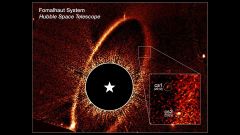
Dec 20th, 2025 - It's quick and easy to access Live Science Plus, simply enter your email below. We'll send you a confirmation and sign you up for our daily newsletter, keeping you up to date with the latest science news. Facebook X Whatsapp Reddit Flipboard Join the conversation Add us as a preferred source on Google Newsletter Subscribe to our newsletter Astronomers hoping to observe a planet around a nearby star have witnessed a much rarer "unprecedented celestial event," the team said: The violent aftermath ... [Read More]
Source: livescience.com

Dec 19th, 2025 - Follow Earth on Google Supernova explosions are part of how the universe builds matter, but they're not the only cosmic blasts that shape what we're made of. When a massive star runs out of fuel, it ends its life as a supernova. The star's core collapses, its outer layers blast outward, and the explosion scatters heavy elements like carbon and iron into space. There is also a second, much rarer kind of explosion. In a kilonova, two neutron stars collide and produce even heavier elements, ... [Read More]
Source: earth.com
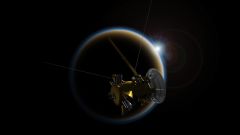
Dec 19th, 2025 - Saturnian moon may be the solar system's biggest slushie According to a NASA study, Saturn's moon Titan may be the most fantastically large slushie of all time. Based on a reexamination of data from the Cassini probe collected in 2012, the moon's long-suspected global ocean may actually be a slurry of ice and rock. Many icy moons in the outer solar system are believed to harbor vast subsurface oceans sandwiched between thick ice shells and rocky cores. Since 2008, the methane-shrouded moon ... [Read More]
Source: newatlas.com

Dec 19th, 2025 - Sky This Week is brought to you in part by Celestron. Friday, December 19 We're getting ready to say goodbye to the summertime constellations, including Cygnus the Swan, now about 40° high in the west two hours after sunset. Before this famous star pattern disappears, however, let's take a last look at some of its lovely deep-sky treasures, such as the North America Nebula (NGC 7000). With no Moon in the sky tonight, darkness is on our side. NGC 7000 lies just 3° east of Deneb ... [Read More]
Source: astronomy.com

Dec 19th, 2025 - It's quick and easy to access Live Science Plus, simply enter your email below. We'll send you a confirmation and sign you up for our daily newsletter, keeping you up to date with the latest science news. Facebook X Whatsapp Reddit Flipboard Join the conversation Add us as a preferred source on Google Newsletter Subscribe to our newsletter We've watched it speed through the solar system using the most powerful telescopes in human history . We've studied its light with probes whipping around the ... [Read More]
Source: livescience.com
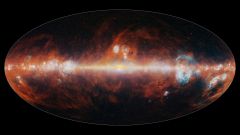
Dec 19th, 2025 - An infrared atlas reveals how the universe grew up, and where life's ingredients hide. In the first fractions of a second after the Big Bang, the universe ballooned outward at a speed that still defies explanation, stretching space itself before stars or even atoms had a chance to form. Cosmologists call this moment inflation, and for decades it has remained frustratingly abstract, etched into equations but with no reference in physical observations. Now, a new space telescope has begun to ... [Read More]
Source: zmescience.com

Dec 18th, 2025 - NEW YORK (AP) — NASA's Hubble Space Telescope got a rare look at the aftermath of two cosmic collisions — and helped scientists solve a decades-old mystery. Many years ago, scientists saw a dense, bright spot near a young star called Fomalhaut. They thought it could be a planet and continued to track it. But in 2023, Hubble's pictures revealed something strange. The bright spot had vanished — and a new one had appeared — a sign that it wasn't a planet after all. ... [Read More]
Source: apnews.com

Dec 18th, 2025 - For two decades, astronomers have wondered how supermassive black holes could exist less than a billion years after the Big Bang. They knew that the processes inside normal stars simply couldn't create such objects within that time frame. But if so-called "monster stars," those with masses between 1,000 and 10,000 times that of our Sun existed, that would solve the mystery. Recently, an international team of scientists using the James Webb Space ... [Read More]
Source: astronomy.com

Dec 18th, 2025 - When we talk about "Earth-like" worlds, it is tempting to picture blue oceans and white clouds and stop there. But the bigger mystery is what happens much earlier, when a newborn solar system is still just a swirling disk of gas, dust, and tiny rocks. In that chaotic stage, small differences can steer a planet toward becoming a mostly rocky world like Earth or something very different. A new study suggests one of those differences may be surprisingly common, and it may begin with a dramatic ... [Read More]
Source: universal-sci.com